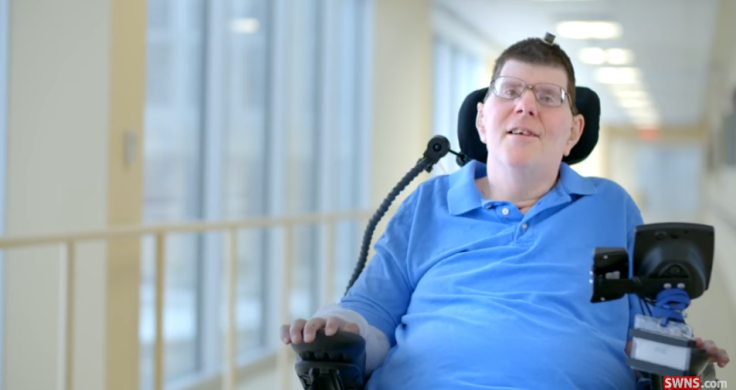Paralyzed Man Uses Mind-Controlled Device To Move Arm, Feed Himself, For First Time In 8 Years

Although Bill Kochevar is paralyzed from the shoulders down, he was able to feed himself mashed potatoes for the first time in eight years with the help of new technology that restored the neural connections between his brain and arm. Not only was the feat amazing for Kochevar, a 56-year-old Cleveland resident, but it also signals a major breakthrough in restoring the ability of paralyzed people to move their limbs.
The technology helped to restore the connection between Kochevar’s brain and arm, which had been lost eight years earlier due to a cycling accident, Time reported. Researchers implanted an electrode array into the motor cortex of Kochevar’s brain, an area that controls arm and hand movement, The Washington Post reported. The array was first hooked up to a computer with a virtual arm, but once Kochevar mastered moving the virtual arm he progressed to the real thing. The electrodes decode brain signals into electrical pulses that help the arm move — all a patient needs to do is think. According to The Post, it only took Kochevar a few minutes to move his own arm using nothing but thought.
Read: Mind-Controlled Suit May Give Paralyzed the Ability to Walk [VIDEO]
“For somebody who’s been injured eight years and couldn’t move, being able to move just that little bit is awesome to me,” said Kochevar, according to The Daily, a newsletter from Case Western Reserve University. “It’s better than I thought it would be.”
The feat is described in a study now published online in the The Lancet. According to study lead author, Abidemi Bolu Ajiboye, assistant professor at Case Western Reserve University, the technology could be available to the general public in five to 10 years, The Post reported.
Kochevar also has 36 electrodes inside of his arm that help to stimulate the muscles to contract and move on demand. However, his arm still needs the help of a sling to move as eight years of paralysis have significantly compromised the muscle. Kochevar can only move his arm, he still has no sensation in the limb and cannot feel what he is holding. Still, Kochevar was able to eat, scratch his nose, and drink, with only a minor delay from thought to action.
The device used on Kochevar is only one of many mind-controlled tools that have been developed in recent years with the hopes of restoring some sense of independence to paralyzed individuals. For example, in a 2015 study, researchers at Stanford University made major developments in a thought-controlled keypad that would hopefully make communication easier for patients in the more severe stages of Lou Gehrig’s disease. The keyboard was described as being nearly as fast and accurate as single-finger typing.
Source: Ajiboye AB, Willett FR, Young DR, et al. Restoration of reaching and grasping movements through brain-controlled muscle stimulation in a person with tetraplegia: a proof-of-concept demonstration. The Lancet . 2017
See Also:



























